2050 Sustainable Materials Series: Hemp
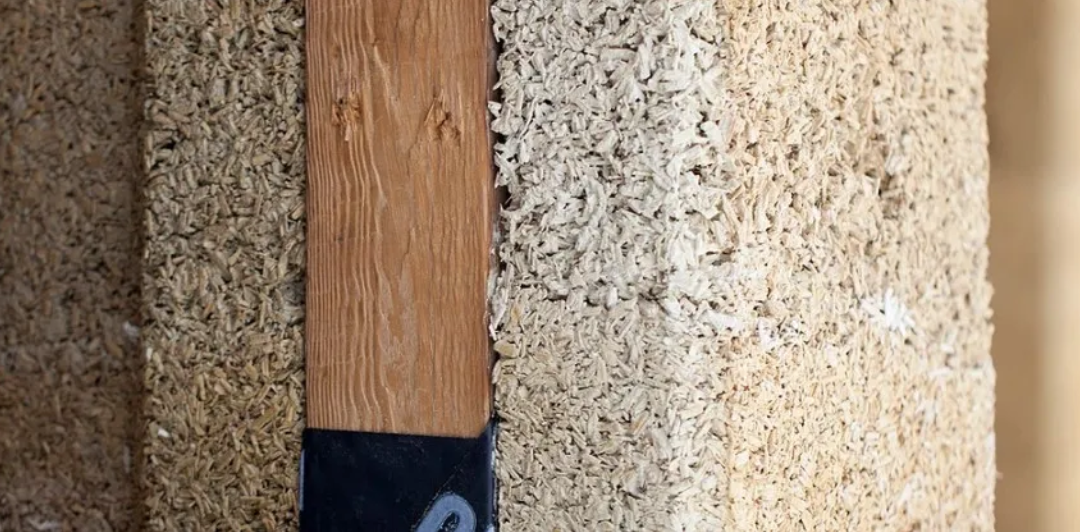
Climate change is now more real than ever, posing a very serious threat to future generations and life on the planet as we know it.
The construction sector consumes about 40% of the world’s global energy, 25% of the global water and 40% of the global resources (UN Environment Program, 2016). However, it doesn’t have to be that way — This consumption can be drastically reduced through the substitution of mineral aggregates by plant or bio-based alternatives. Such an alternative is Hemp.
Hemp produces two different kinds of fibre— the woody hurds of the inner stem, and the fine bast. The strong woody hurds are extremely durable and sturdy; meaning they can be utilised to manufacture construction materials, whereas the fine bast can be used to produce paper and fabrics. In recent decades, the most well-recognised hemp-based building materials are hempcrete or hemp blocks/bricks.
Hempcrete — What is it?
Hempcrete is a bio-composite material, a mixture of lime and hemp hurds. Hemp hurds have naturally high contents of silica, which makes them a high performance binding agent. Hempcrete has many advantages over conventional lime mixes, such as:
- High flexibility, hence it is not brittle and does not require expansion joints.
- Moisture resistance.
- Fire resistance.
- High insulating properties in any climate.
- Absorption of CO2 during the curing process.
Although hemp’s revival as a construction material has come into play more than four decades ago, its application has been relatively uncommon despite the numerous benefits it has to offer. For one, most conventional building materials have high embodied carbon, meaning they emit significant levels of carbon dioxide into the atmosphere over their lifespan, from extraction all the way to disposal.
In contrast, hemp-based building materials absorb more carbon than they actually emit during their lifetime, resulting in an overall carbon negative effect. Plants absorb carbon from the atmosphere as they grow, and due to its rapid growth rate hemp can lock up more carbon per hectare than just about any other plant, including trees. When this biomass is harvested, mixed with lime, and put into a building, it locks up that carbon for the whole building lifespan.
As a rule of thumb, 1 m3 of hempcrete wall can actually absorb 165 kg of carbon dioxide during the manufacturing process.
 If you want to understand the potential of replacing traditional building materials in the building frame with hempcrete blocks, head to https://app.2050-materials.com/tools/dot
If you want to understand the potential of replacing traditional building materials in the building frame with hempcrete blocks, head to https://app.2050-materials.com/tools/dot
Case study: Flat House, Cambridgeshire
Flat House, located in rural Cambridgeshire, United Kingdom is a “radically low embodied carbon house” as described by the architects. This house was designed to create a prototype for pre-fabricated hemp-based construction for more and broader use of hempcrete.
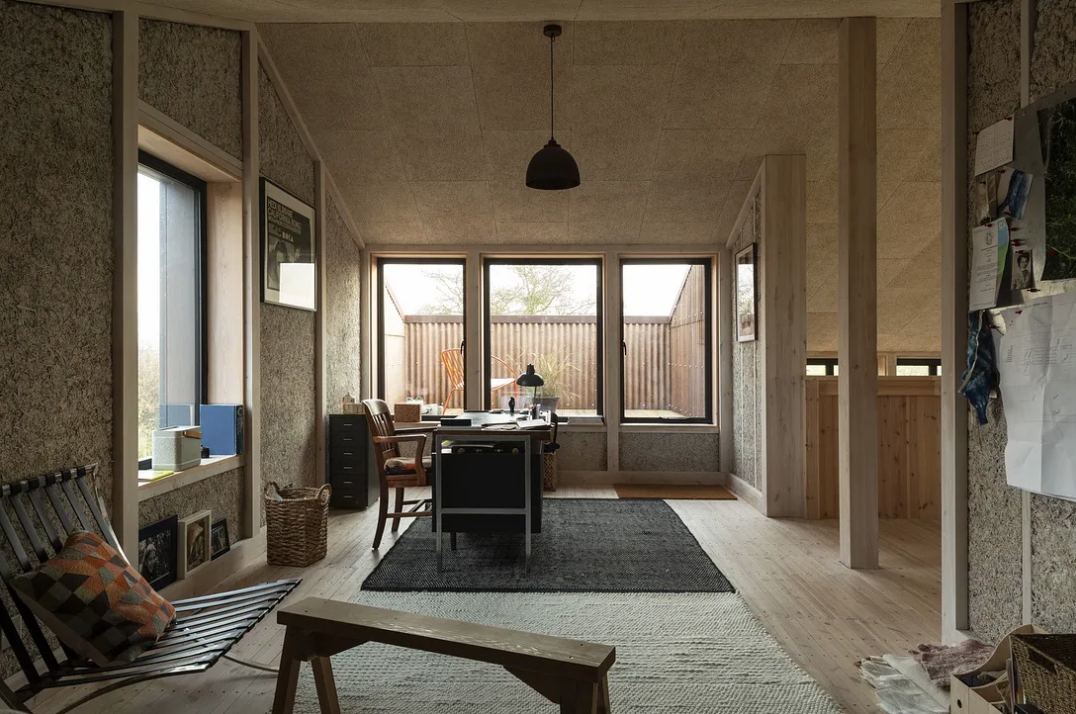
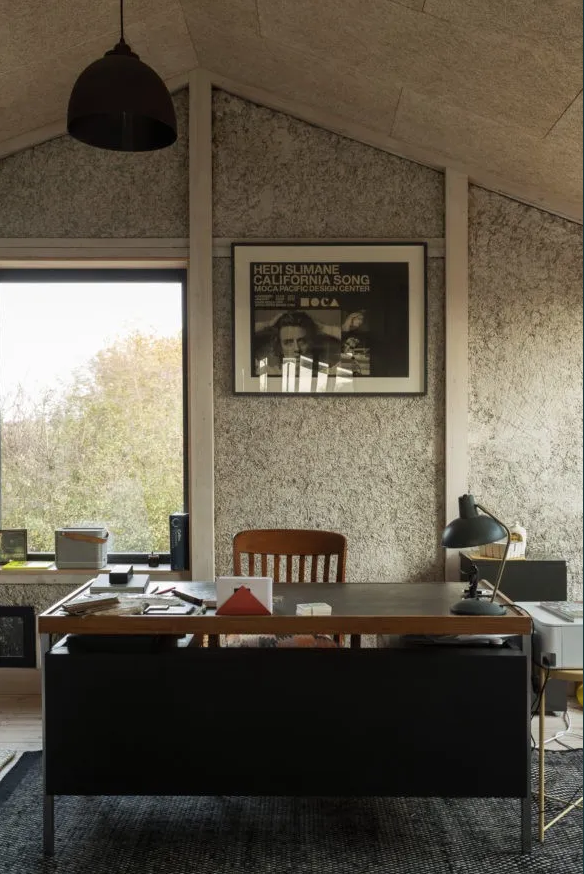
The team of architects, engineers, and material specialists collaborated to develop a prefabricated panel infilled with hemp that is harvested on 20 acres of the local farm. This collaboration led to the creation of a brand-new hemp fibre cladding product, and more importantly, the establishment of Material Cultures, a research organisation whose aim is to explore biomaterials in the context of off-site construction.
- Architects: Material Cultures, Practice Architecture
- Area: 100 m²
- Year: 2019
- Photographs: Oskar Proctor
- Location: Cambridgeshire, United Kingdom
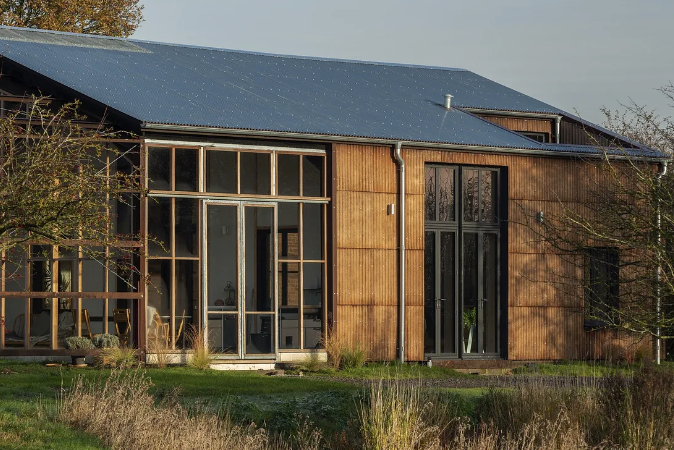
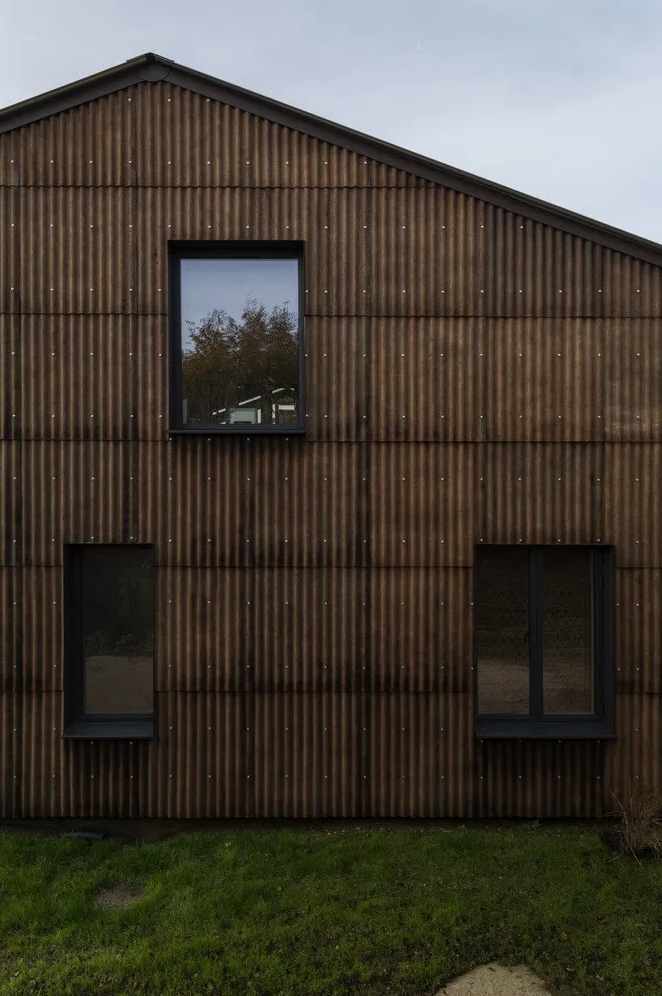
Key characteristics:
Hemp has the longest, softest and most durable fibre in existence. Its fabric has high insulating properties, is absorbent, cool and is not prone to moisture accumulation. Hemp, as a construction material is an organic product without any additives harmful to human health, which does not just keep the internal environment comfortable, but it even helps clean it.
It is an extremely fast-growing crop with low water requirements, and in most cases no fertiliser requirements to be grown or be processed into “hurd”. On top of that, it can be recycled up to 7 times.
It is estimated that a stand of about 1 ha can yield about 8 tons of hemp hurd. This is enough to provide enough building material for a 50 m² dwelling.
Other hemp-based building products
Hemp blocks or bricks
The blocks are made of hemp vegetable fibres, natural lime and earth. These components are mixed, pressed and air-dried, so the energy consumption during the manufacturing process is very low. These natural bricks have outstanding fire and insulating performance in any climate, outperforming dwellings built with conventional materials.
Hemp planks
Hemp planks are a clean and recyclable product, used for roof, wall and floor insulation in lieu of conventional products or wooden planks. Due to their simplified assembly requirements, they can be adapted to any type of construction. Planks ensure automatic regulation of humidity without any heat loss, contributing to more efficient operational performance and contribute to energy savings. Unlike wood, hemp does not contain albumin and therefore removes the risk of being attacked by parasites, minimising maintenance requirements.
So, is it worth it?
Hemp is a carbon-negative material that is lighter than plastic and stronger than steel, enabling multiple use-cases from framing, finishes, all the way to insulation products. The farming process of the crop removes more carbon dioxide than any other plant on the planet. In addition, it remediates soil on land that has been damaged or destroyed.
It does all of that while costing less than conventional or mineral-based products. Is it worth it?
Panchami Pandharikar, Environmental Designer
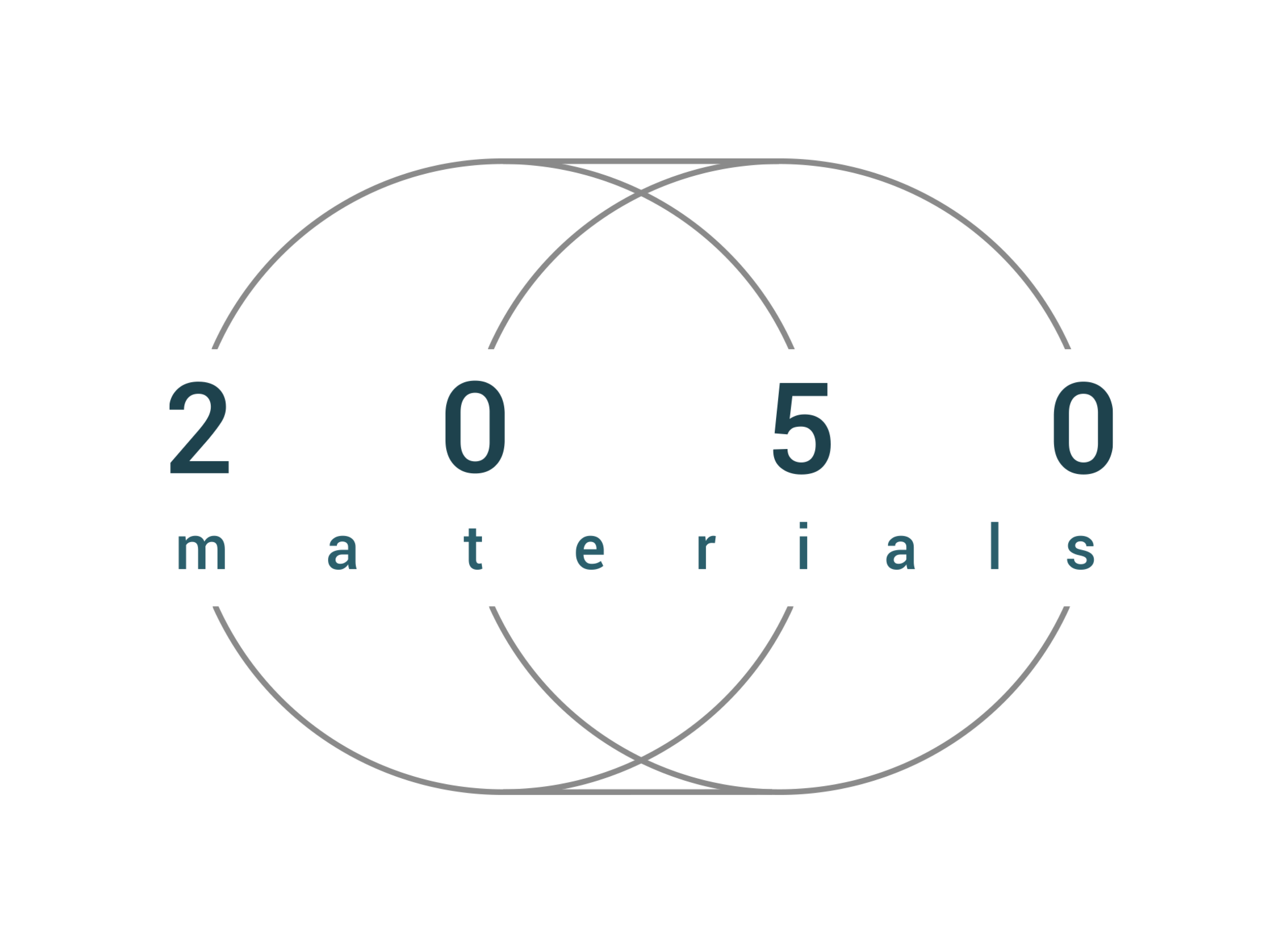
2050 Materials Platform
2050 Materials is building the most extensive building product database for bio-based and sustainable materials. It offers material research and scenario analysis tools helping specifiers find transparency facts and easy-to-comprehend information on any product they specify.
If you are a manufacturer working on bio-based or sustainable materials, we should talk. Reach out to us or book a demo to get listed, we’ll do the rest and spread the word.
Related articles

Climate-Resilient Materials for the Built Environment: A Data-Centred Prime
As climate volatility intensifies, resilience metrics are fast becoming as critical as carbon data in material selection. This article outlines why adaptation is now a design imperative, how materials can be evaluated through a systems lens, and what KPIs project teams should demand. From self-healing concrete to fire-rated façades, we present a structured taxonomy of resilient materials, explain how to embed this intelligence into digital design workflows, and propose next steps for specification, benchmarking, and procurement.
Read more
The Most Interesting Low Carbon Products in Office Design
In this article and collection, we highlight 11 outstanding products that contribute to a lower carbon footprint in office design.
Read more
Top Low Carbon Building Boards: Performance, Benefits, and Use Cases
The building boards highlighted in this article and collection showcase low-carbon innovation in modern construction.
Read more